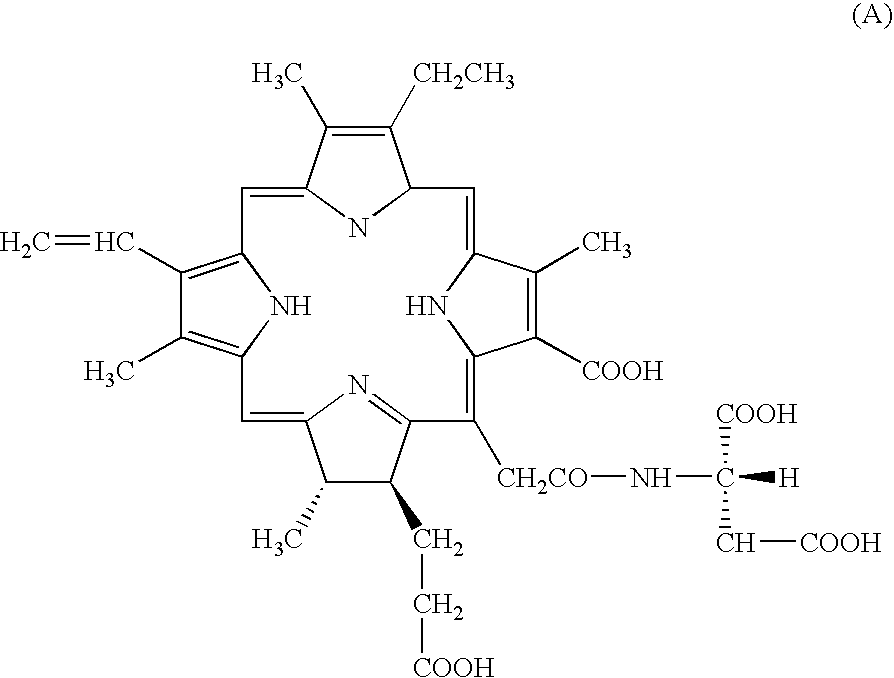Photodynamic therapy for selectively closing neovasa in eyeground tissue
a selective closing and neovascular therapy technology, applied in the field of photodynamic therapy, can solve the problems of long-term phototoxicity, poor selectivity to accumulate in the target, and severe damage to visual functions
- Summary
- Abstract
- Description
- Claims
- Application Information
AI Technical Summary
Benefits of technology
Problems solved by technology
Method used
Image
Examples
example 1
for Formulation
[0145]100 mg of mono-L-aspartyl chlorin e6 tetra-sodium salt was dissolved in 4 ml of distilled water ready for injections. The resulting aqueous solution was then adjusted to pH 7.4. After the aseptic filtration thereof, the resulting sterilized solution was lyophilized in vials. The resulting lyophilized preparation may be dissolved in an appropriate volume of physiological saline, before its use.
example 2
of Formulation
[0146]10 mg / ml of ICG was dissolved in a volume of sterile physiological saline at a concentration of 10 mg / ml. Further, mono-L-aspartyl chlorin e6 tetra-sodium salt was dissolved in a further volume of physiological saline at a concentration of 10 mg / ml. The resultant two aqueous solutions were mixed together in the equal proportions. The resulting solution of ICG and NPe6 is suitable for the intravenous injection of ICG and NPe6 in order to carry out the method of the third aspect of this invention.
PUM
| Property | Measurement | Unit |
|---|---|---|
| wavelength | aaaaa | aaaaa |
| wavelength | aaaaa | aaaaa |
| irradiance | aaaaa | aaaaa |
Abstract
Description
Claims
Application Information
 Login to View More
Login to View More - R&D
- Intellectual Property
- Life Sciences
- Materials
- Tech Scout
- Unparalleled Data Quality
- Higher Quality Content
- 60% Fewer Hallucinations
Browse by: Latest US Patents, China's latest patents, Technical Efficacy Thesaurus, Application Domain, Technology Topic, Popular Technical Reports.
© 2025 PatSnap. All rights reserved.Legal|Privacy policy|Modern Slavery Act Transparency Statement|Sitemap|About US| Contact US: help@patsnap.com

